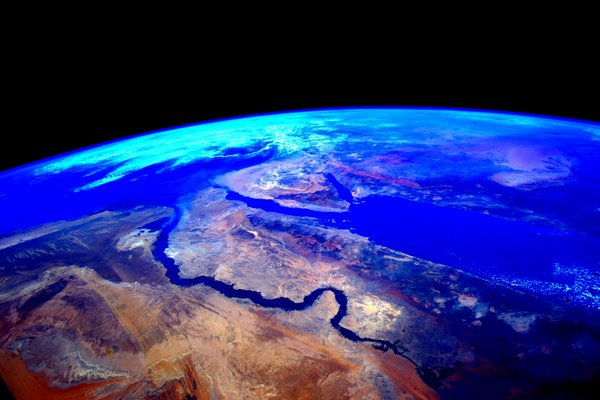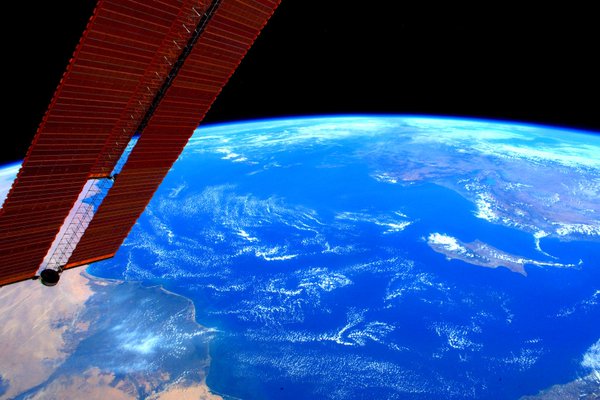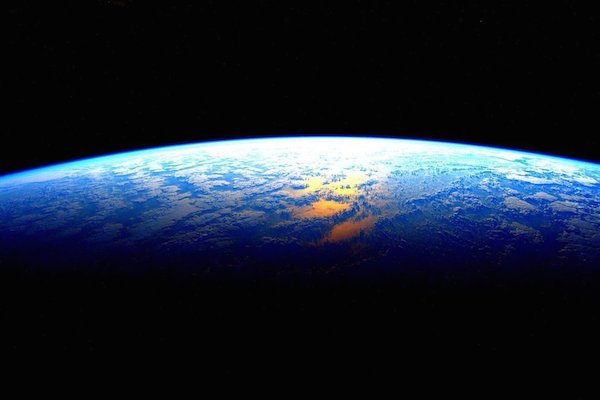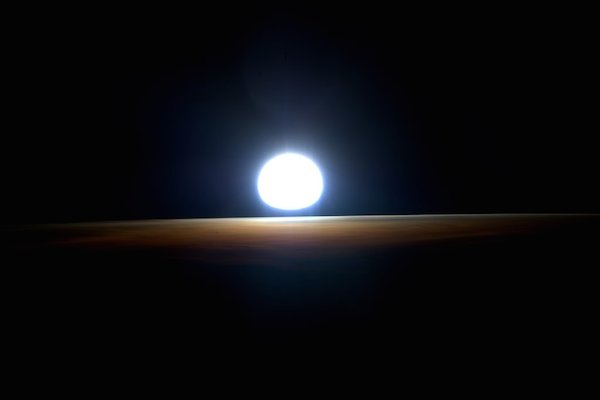
You may not be spacewalking any time soon, but NASA has opened a free database to let you explore from Earth.
If you’re looking to add more authenticity to your science fiction writing, check this out: NASA has set up a website to make its publicly funded research available for free. The archive features a decent search engine and gives full access to peer-reviewed papers.
Working on a story on a space plague and wonder how microbes adapt to microgravity? Check it out. Want to know the latest developments in artificial gravity research? Yep, they’ve got that too.
Some of my fishing expeditions in the NASA database led me to articles light years above my scientific comprehension. But others, such as this piece on arctic climate trends as observed from space, were completely comprehensible to a neophyte such as myself.
Thanks go to sf writer Chris McKitterick for bringing this one to my attention.
Happy exploring.
Moment of Wonder: Earth Seen Through Saturn’s Rings
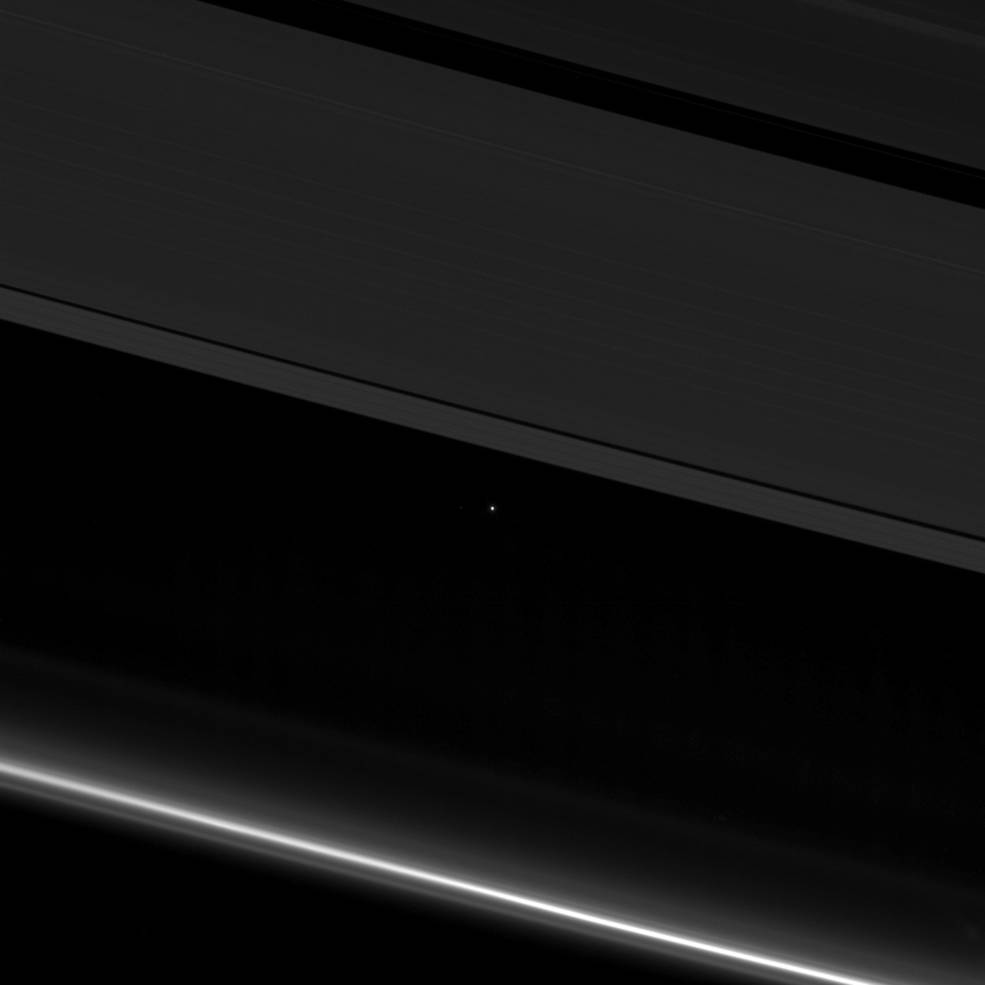
Earth as seen through Saturn’s rings, as photographed by NASA’s Cassini space probe.
See that dot in the middle of the picture? That’s Earth as photographed through the rings of Saturn.
A recent image from NASA’s Cassini spacecraft shows our home planet as a tiny speck of light between the icy rings. To me, it kind of looks like a speck of dust caught in the grooves of a vinyl record. Whatever your individual interpretation, it’s a reminder that we’re one tiny bright spot floating in a sea of stars.
Makes you feel kind of insignificant, doesn’t it?
Cassini shot the image on April 12, when it was 870 million miles from Earth. The robotic spacecraft — a joint mission between NASA, the European Space Agency and the Italian space agency, Agenzia Spaziale Italiana — has been orbiting the ringed planet and studying its system in detail.
That mission, however, will end later this year.
After a close pass by Saturn’s moon Titan, Cassini is beginning a final 22 orbits around the planet, which will terminate with a dramatic final descent. Dubbed the Grand Finale by NASA, the probe will take a “science-rich plunge” into Saturn’s atmosphere on Sept. 15.
Moment of Wonder: Juno sends its first snaps
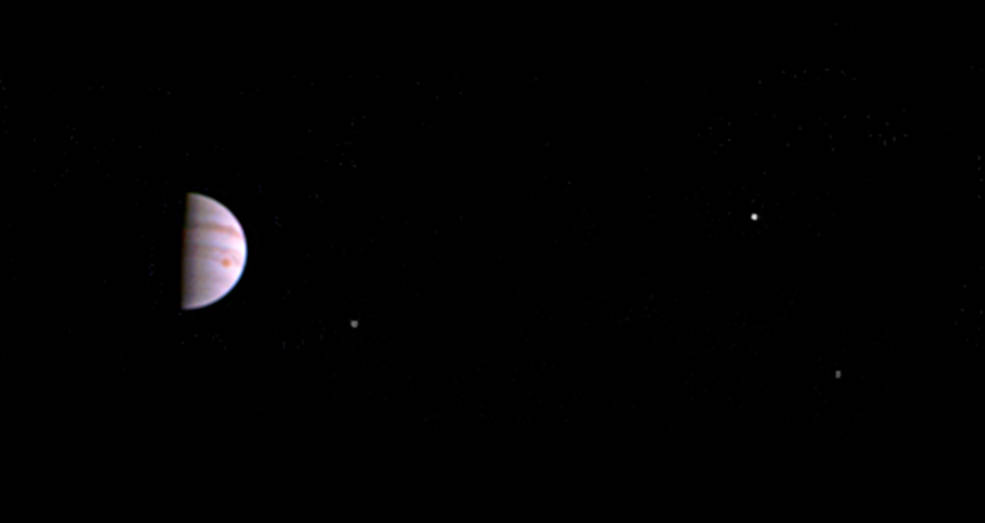 Did I mention NASA’s Juno mission yesterday? Well, it looks like mind-blowing images are already starting to arrive from Jupiter.
Did I mention NASA’s Juno mission yesterday? Well, it looks like mind-blowing images are already starting to arrive from Jupiter.
The camera aboard the Juno spacecraft has sent its first images after its July 4 arrival, NASA announced yesterday. The visible-light camera switched on six days after the craft fired its main engine and propelled itself into orbit around the gas giant.
Pretty impressive, I’d say. Especially considering high-resolution images of Jupiter are still a few weeks away, according to NASA. Those start arriving August 27.
The shot above was taken June 10, when Juno was still 2.7 million miles from Jupiter on the outbound leg of its initial 53.5-day orbit. It shows the Jovian planet’s atmospheric features, including its eye-like Great Red Spot. You can see three of the planet’s four largest moons — Io, Europa and Ganymede, from left to right.
During its mission, Juno will circle Jupiter 37 times, doing flybys of the planet’s cloud tops — as close as about 2,600 miles. Sounds there’s plenty of wonder yet to come.
Moment of Wonder: Ceres’ permanent shadows
I missed my opportunity to get excited about NASA’s Juno mission, which entered Jupiter’s orbit when I was spending time away from the blog. (I needed to finish up edits on a novel.)
Hopefully this bit of cosmic craziness makes up for my truancy.
Here’s the deal: It appears one of NASA’s other missions, Dawn, has helped scientists identify permanently shadowed regions on the dwarf planet Ceres. Most of these spots have probably been cold enough to trap water ice for a billion years, meaning it’s possible ice deposits exist there now.
Ceres is the largest object in the astroid belt between Mars and Jupiter. It’s also been of particular interest to scientists because a remnant internal ocean of liquid water might be contained under its icy mantle.
“The conditions on Ceres are right for accumulating deposits of water ice,” said Norbert Schorghofer, a Dawn guest investigator at the University of Hawaii at Manoa. “Ceres has just enough mass to hold on to water molecules, and the permanently shadowed regions we identified are extremely cold — colder than most that exist on the moon or Mercury.”
The permanently shadowed regions lie along the northern hemisphere of Ceres. NASA used images taken by the Dawn mission combined with computer modeling of illumination to run its calculations and to develop the cool video above.
If you really want to drill down into the subject (pardon the pun), the findings are available online.
Moment of Wonder: Spinning Around Two Suns
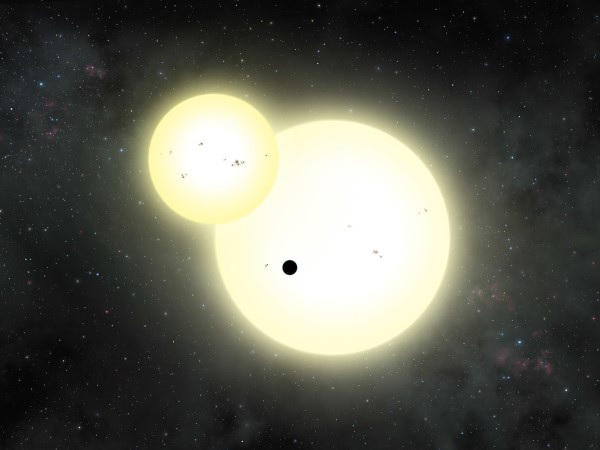
An artist's impression of a stellar eclipse and planetary transit events on Kepler-1647. Credit: Lynette Cook
NASA has announced its discovery of the largest known planet that orbits two suns. These bodies are known as circumbinary planets, or “Tatooine planets,” after Luke Skywalker’s home world.
The planet Kepler-1647b — roughly the mass and radius of Jupiter — is 3,700 light-years away and an estimated 4.4 billion years old, about the same age as Earth. The stars it orbits are similar to our own sun, with one slightly larger and the other a little smaller.
A team led by astronomers from Goddard Space Flight Center in Greenbelt, Maryland, and San Diego State University (SDSU) in California identified the planet using NASA’s Kepler Space Telescope. The discovery was announced this week in San Diego at a meeting of the American Astronomical Society.
“(Finding) circumbinary planets is much harder than finding planets around single stars,” said SDSU astronomer William Welsh, one of the coauthors of the NASA study on the planet. “The transits are not regularly spaced in time and they can vary in duration and even depth.”
Moment of Wonder: The Great Barrier Reef from Space
NASA has posted this stunning shot of Australia’s Great Barrier Reef taken from the International Space Station.
The area covered in the photograph spans 10 miles of the 1,700-mile Great Barrier, the largest reef system on Earth. The system is composed of 3,000 separate reefs and coral cays and supports hundreds of types of corals and thousands of animal species. Only three reefs are visible in the picture above — and as you can probably guess, those cottony white things are clouds.
According to NASA, reef systems’ shallow lagoons show up as iridescent blues from space and contrast sharply with the dark blues of deep water. That makes them relatively easy to spot and photograph from Earth’s orbit.
For the gearheads among you, the astronaut snapped this image on October 12, 2015, with a Nikon D4 digital camera using an 1150 millimeter lens.
Moment of Wonder: The Shock Breakout of a Supernova
NASA has shared some amazing footage of Mars, Pluto and the moons of Saturn. But this may be its recent money shot.
The space agency’s planet-hunting Kepler Space Telescope has for the first time captured the flash of an exploding star’s shockwave using optical wavelength, or visible light. Astronomers call this brilliant flash a “shock breakout.” They only last about 20 minutes and are essentially the opening salvo of a dying star going supernova.
A team led by Peter Garnavich, an astrophysics professor at the University of Notre Dame, analyzed light captured by Kepler every 30 minutes over a three-year period from 500 distant galaxies to obtain the the photometric observations used to create this video animation.
“In order to see something that happens on timescales of minutes, like a shock breakout, you want to have a camera continuously monitoring the sky,” Garnavich says. “You don’t know when a supernova is going to go off, and Kepler’s vigilance allowed us to be a witness as the explosion began.”
Sit back and enjoy the light show.
Moment of Wonder: The Rings and Moons of Saturn
When I was a kid, the mystery of Saturn’s vast rings had me in their sway. I did a number of school projects on our solar system’s second-largest planet and even attempted to draw a comic book chronicling the adventures of its alien inhabitants.
The recent photos coming back from NASA’s Cassini spacecraft have helped rekindle that fascination (although I’ve long since given up any aspirations of being a comic artist). Yep, those vast rings still hold plenty of mystery.
Take, for example, this photo Cassini snapped of three of Saturn’s moons — Tethys, Enceladus and Mimas — straddling the rings.
In this configuration, Tethys (660 miles across) appears above the rings, while Enceladus (313 miles across) is just below at the center and Mimas (246 miles across) is located to its left.
For those keeping track of such things, the craft acquired the shot at a distance of 837,000 miles from Enceladus. Tethys was 1.2 million miles away and Mimas was approximately 1.1 million miles away.
The Cassini mission is a cooperative project of NASA, the European Space Agency and the Italian Space Agency.
Moment of Wonder: Scott Kelly, astronaut and photographer
Unless you’ve been lost in orbit, you’ve probably heard about Scott Kelly, the NASA astronaut who returned to Earth yesterday after an astounding 340 days in space. His trip, the longest completed by a U.S. astronaut, is expected to yield important data on the effects of long-term life in space on the human body.
Moment of Wonder: A selfie on the surface of Mars
 NASA’s Curiosity Rover shot this “selfie” on the surface of Mars, where the robotic vehicle’s drill collected samples from Mount Sharp.
NASA’s Curiosity Rover shot this “selfie” on the surface of Mars, where the robotic vehicle’s drill collected samples from Mount Sharp.
The photo is the result of NASA editing together dozens of images taken earlier this year by a camera mounted at the end of the rover’s robotic arm. The arm itself was edited out of the shot to allow a better view of the rover and its Red Planet surroundings.
The Pahrump Hills outcrop surrounds the rover and the upper portion of Mount Sharp is visible on the horizon. The darker patches on the ground in the upper right and lower left is the result of ripples of wind-blown sand and dust.
Click the photo for a bigger view.



